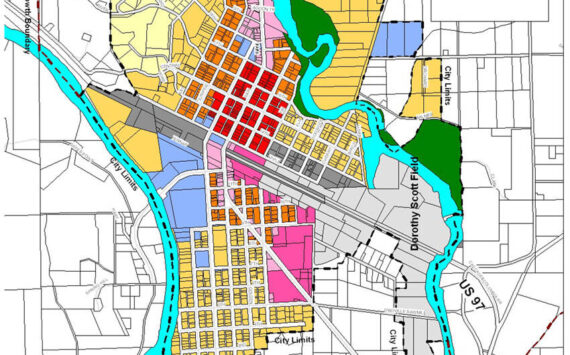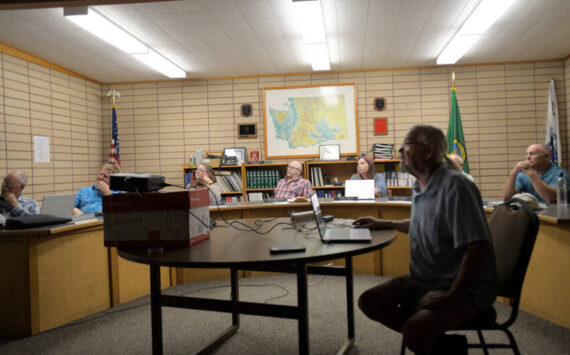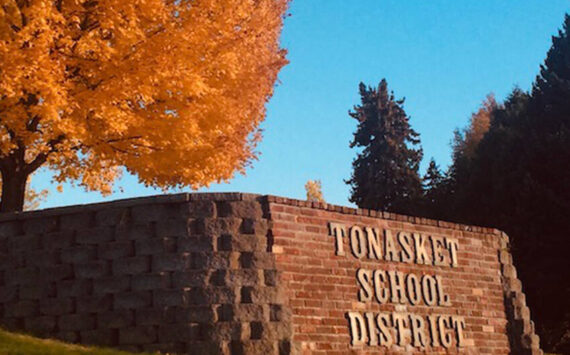OROVILLE – Just how much the state will cut from school funding as it faces a huge deficit has yet to be determined, but the Oroville School District can already see storm clouds gathering on the horizon.
“They’re talking about cutting I-728 dollars and that represents about $250,000 a year for us,” said Dr. Ernie Bartelson, district superintendent.
Initiative 728 was passed by the voters to help reduce class size and gave the district money to hire staff to try and meet that goal. In its first year the initiative helped to bring Oroville about $300 per student and since then it has grown to $450 per student.
“I hadn’t realized the legislature could repeal an initiative after a few years,” said Bartelson, who adds that levy equalization money may be taken away as well.
Levy equalization money is paid to school districts, mostly in rural areas, which pass levies, but have trouble generating much money because of the lower amounts of valuation in their districts compared to those in the more urban areas of the state. Oroville had already lost about half its levy equalization money as the valuation went up mostly due to a boom in resort and vacation properties. However, the levy equalization money still represented about $200,000 a year to the district, according to Bartelson.
“We knew we’d probably lose all the levy equalization in a few years, but between the I-728 and levy equalization they represent a lot of money that goes to pay for instructional staff,” Bartelson said.
The superintendent said school districts had started getting warnings of potential cutbacks in programs a couple of months ago. He said he has been trying to keep the board informed about proposed cuts that may come because of the problem. State officials predict a $5 billion shortfall in the next two-year budget. That number could possibly grow to $6 billion, according to Gov. Christine Gregoire.
Bartelson said the school board will continue to monitor the situation, but in past meetings have indicated they want to maintain their goal of reduced class sizes.
At the Monday, Nov. 24 meeting of the school board the directors asked Bartelson, who was planning on retiring at the end of the school year, to stay on an additional year as a cost savings measure.
“In a moment of weakness I had said I would consider staying another year if that would help, especially in the light of potential cuts next year,” Bartelson said. “They said they wanted me to stick around an additional year.”
Bartelson works part time and the board would like to hire a part time superintendent to replace him. However, there is concern that if they could find someone willing to work part time it would be someone near retirement or a new person seeking their first job and that they would not stay with the district very long.
The cost of hiring a new superintendent can run between $40,000 and $50,000, with the cost of hiring a headhunter as much as $10,000 alone, according to the superintendent. That’s why whoever they hire they’d like to stay awhile and not have to go through the cost of hiring someone else in a couple of years.
“By my staying it gives the board another year to find out how bad the state budget situation is going to be,” he said. “We probably won’t know until around next April or May.”
In anticipation of cutbacks, the board looked at dropping some of the extracurricular programs currently offered. They looked at dropping tennis, golf, cross country, varsity wrestling cheerleading and junior high cheerleading, as well as dual sport participation.
“The board heard from a lot of people at their meeting who asked to keep golf, tennis and cross country,” Bartelson said. “They decided to keep the three sports, but drop the other items.”
According to the superintendent, very few wrestling programs have cheerleaders anymore. One reason is new WIAA rules restrict cheers during ongoing matches and the fact the cheerleaders have been moved back from the mat.
“The budget for extracurricular is already about $10,000 short because of the costs of things like refs, coaches and increases in fuel prices. These cuts will help us make up about $8,000 of that.”
The district’s other option is to go to pay-for-play, but the board wants to try and avoid that for now.
“The list of districts that have pay-for-play is growing. Some districts charge up to $150 per sport,” said the superintendent.







